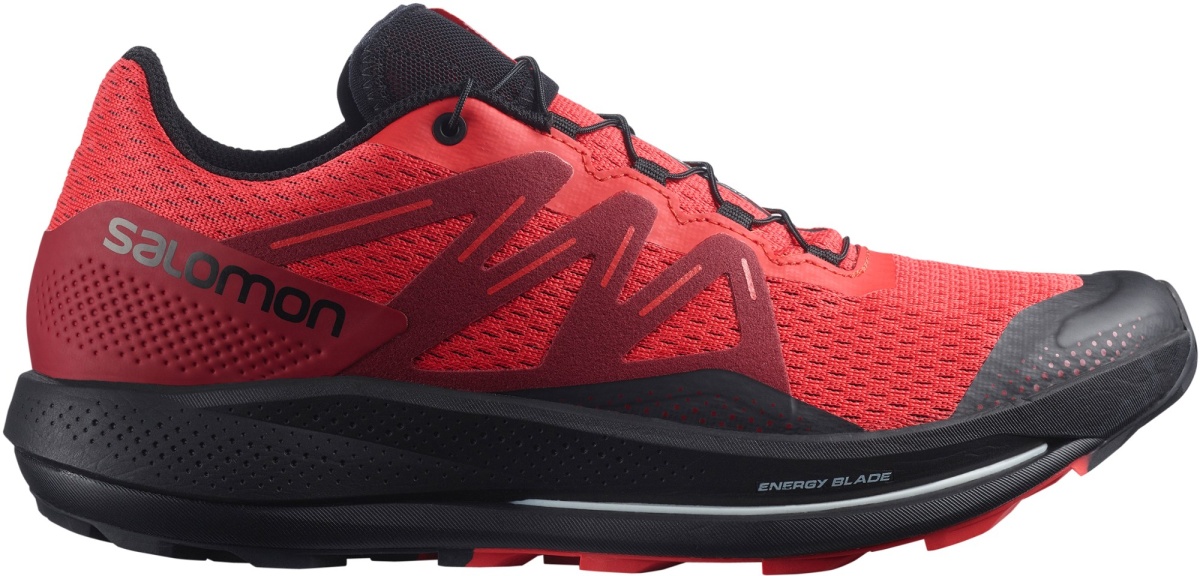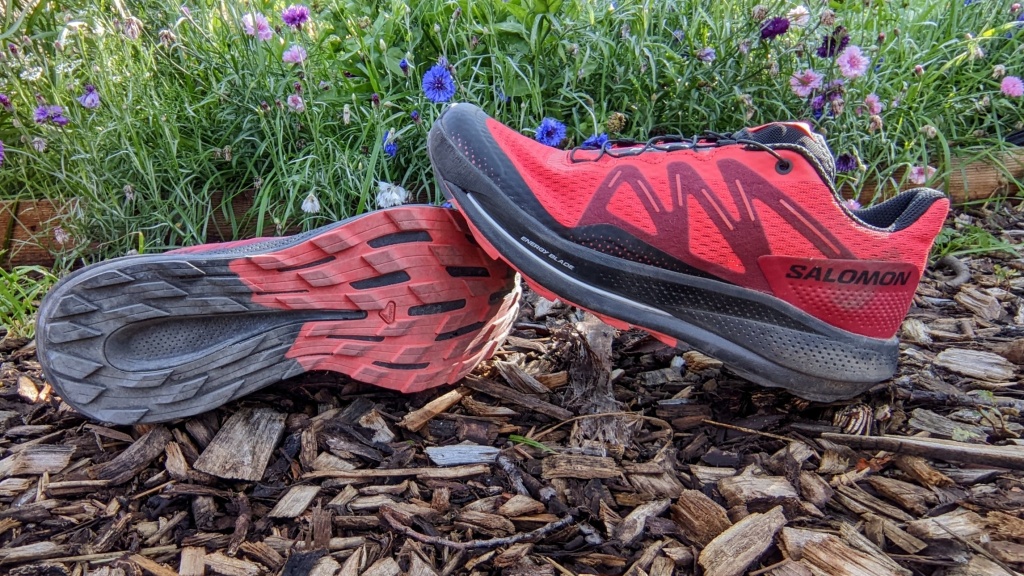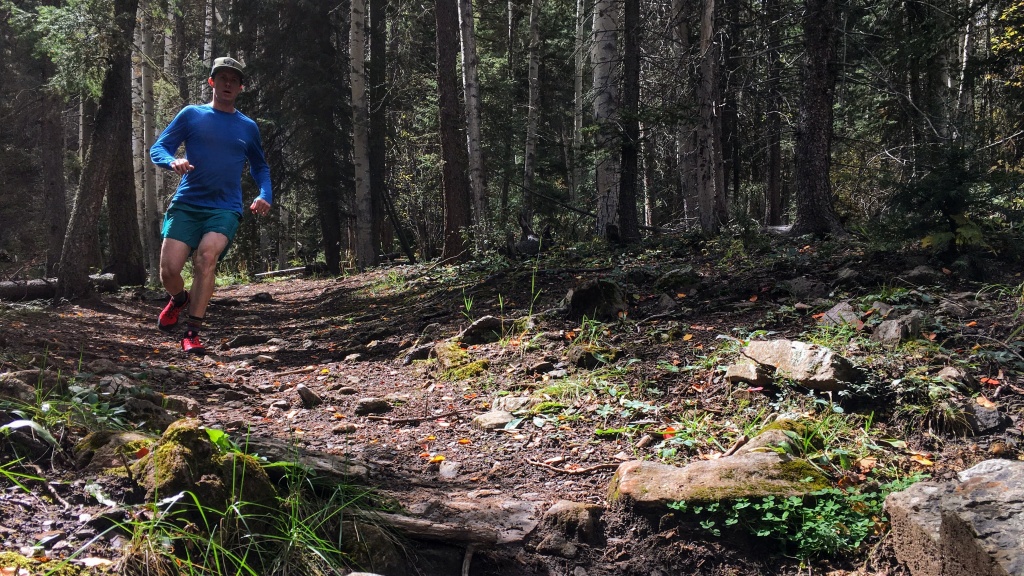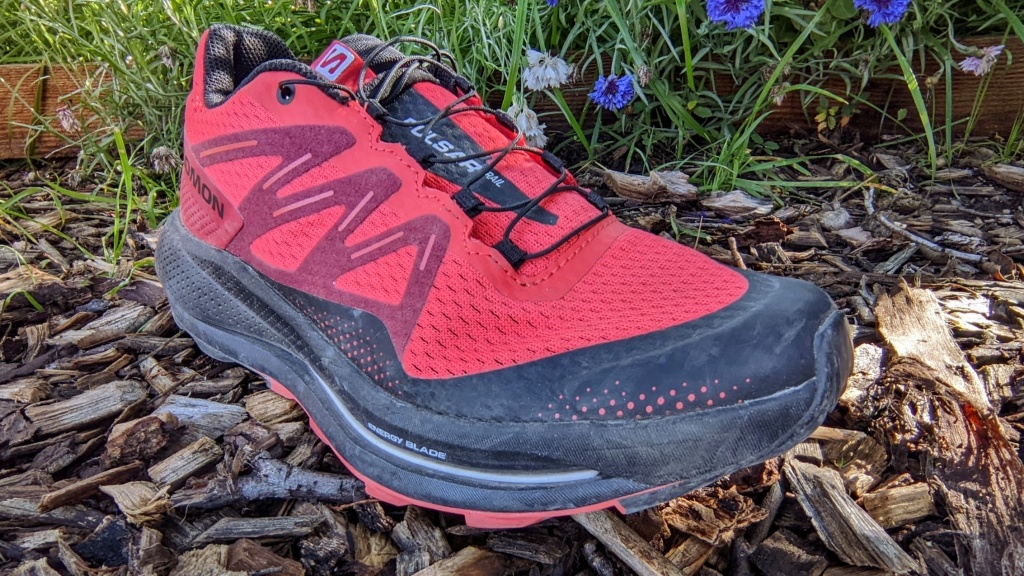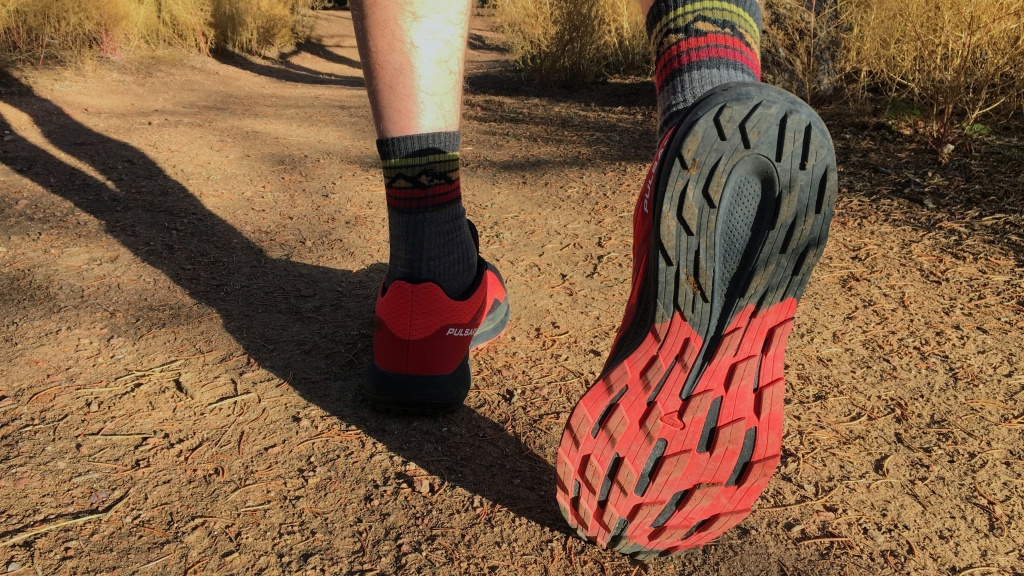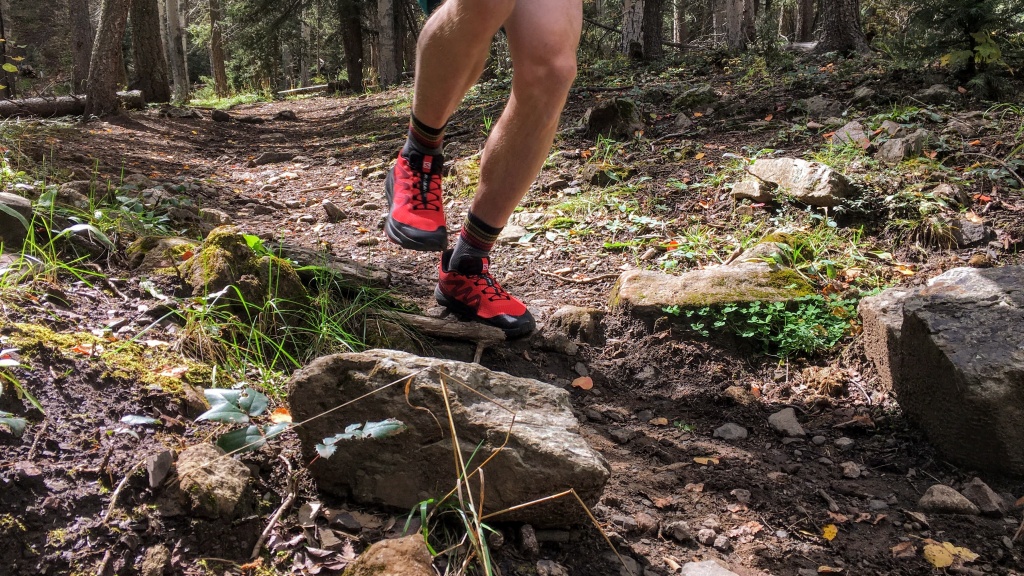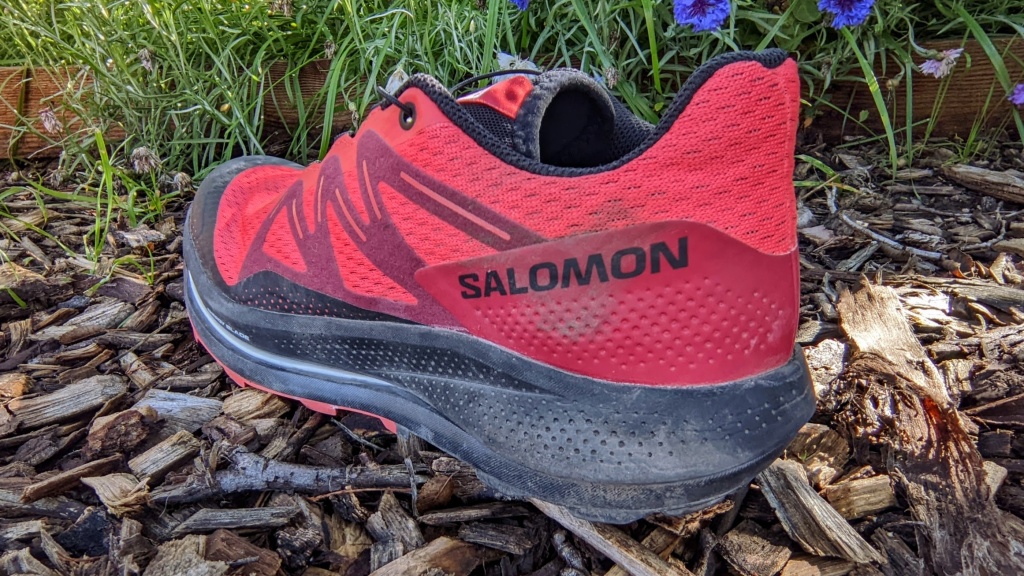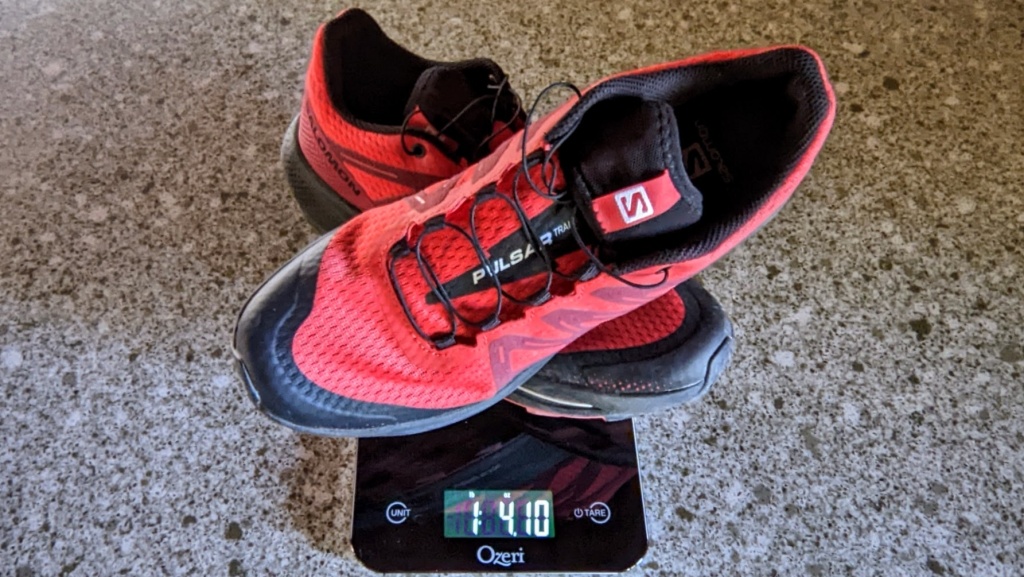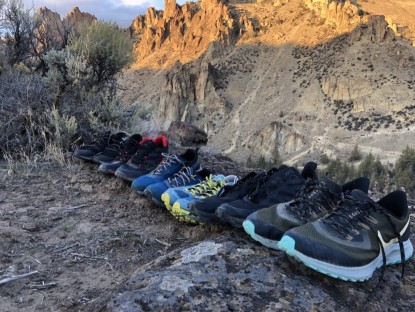Salomon Pulsar Trail Review
Our Verdict
Our Analysis and Test Results
The Pulsar series is the newest to join the already stacked Salomon lineup of trail runners. The series includes the mid-level Pulsar Trail — that we tested here — the slightly stiffer Pulsar Trail Pro, and the more advanced S/Lab Pulsar Trail, designed in conjunction with world-class endurance athlete Kilian Jornet. All of these shoes feature similar technology, such as Salomon's proprietary Energy Blade, a stiff TPU insert that is designed to act like a springboard. Coupled with a substantial amount of rocker and an energetic midsole composite, the Pulsar Trail is designed to encourage propulsion with every stride without sacrificing stability.
Performance Comparison
Foot Protection
With a measured stack height in the heel of 30mm, like other fat shoes in our testing lineup, the Pulsar Trail offers a superior level of protection and stability over rough terrain. However, unlike other shoes we've tested, you don't feel like you're running with a pair of pillows strapped to your feet. The midsole composite includes Olefin block copolymers (OBCs), an elastomer of alternating soft and hard blocks designed to offer a balance of flexibility and abrasion resistance while maintaining a high level of elastic recovery. Coupled with the Energy Blade technology, these shoes are surprisingly stiff underfoot while maintaining an even flex pattern laterally and torsionally.
This design ensures a stiff, stable ride that can adapt to almost any type of trail. This protects your feet on everything from long desert romps to steep alpine climbs. The upper, however, is a majority textile mesh. We worry that this delicate outer shell could fall victim to sharp rocks when running through craggy terrain. Since the internal sleeve puts an additional barrier between your foot and the upper itself, you may not feel it until it's too late.
Traction
Traction may be the largest flaw of the Pulsar Trail. Although, this downfall can be viewed as a blessing or a curse. The smaller, 3mm lugs are well-spaced, allowing unencumbered drainage when running through wet or muddy terrain. But perhaps the biggest difference between the Pulsar Trail and other similar Salomon shoes is the directionality of the lugs. Instead of a triangular or trapezoidal pattern designed to grab the ground by temporarily stopping your stride, this outsole features elongated lugs with a fore-aft directionality. These lugs flow along the gliding path of the outsole, almost like you would find on a full wet F1 tire. So while these shoes perform well in wet conditions and on hardpack dirt, they lack traction in loose dirt or when climbing steep grass.
Sensitivity
This is another area where the Pulsar Trail is significantly lacking — although, again, you can view this as a positive or a negative trait depending on your preferred running style. For those covering long miles over rolling, hardpack ground, the stiffer midsole, high stack height, and substantial rocker under the ball of your foot means that you have a thick, supportive shoe that can help propel you past marathon distances. But for many of those who prefer to push themselves up into alpine trails, the thickness of the Pulsar Trail all but cuts off your proprioception, severing your feet from the feel of the trail and making it harder to make those quick adjustments in uneven terrain.
Stability
Now that we've gone through the bad, we can return to focusing on the positive qualities of the Pulsar Trail. Most notably, this shoe is incredibly stable. Salomon generally conforms to a middle-of-the-road design concerning foot shape, with lasts that often favor a more narrow foot. But you might not notice that the outsole flairs out from the upper, creating a wider platform than a first glance indicates. The stability of this platform is only enhanced by the Energy Blade TPU insert. Unlike single-sheet rock plates that inhibit flexibility to create a more stable platform, the stiff Energy Blade insert is extruded so that it can flex through your stride without losing rigidity. The result is a stable ride, regardless of the terrain underneath your feet. While the Pulsar Trail may be much stiffer than we anticipated, it certainly is one of the most stable shoes we have ever run in.
Comfort and Fit
Although some may find the Pulsar Trail overly stiff, we appreciated this shoe's cushion and comfort on longer outings. The EndoFit, Salomon's version of an internal sleeve or sock liner, does a fantastic job of locking in your foot. Coupled with a simple yet highly effective quick-lace system, we never experienced foot slippage inside the shoe, even when off-trail travel called for sustained side-hilling. One of our favorite features is the height of the Achilles support, which creates a fantastic heel pocket, unlike several other shoes that have recently hit the market. These shoes are well-padded without being clunky and are a pleasure to run in, whether it's a quick jaunt or an ultra effort.
Weight
Relative to other trail runners in our lineup, the Pulsar Trail falls on the lighter end of the spectrum. Tipping the scales at 10.81 ounces per shoe for a men's 10.5 US, it is objectively one of the lighter models we have tested. However, the well-padded upper and the stiff midsole make these shoes feel more substantial than the weight suggests. But, as we may understand by now, negative traits aren't necessarily bad when it comes to the Pulsar Trail. While it may not feel as nimble when compared to other shoes with a similar platform, it feels significantly more stable. That alone is worth the perceived extra weight.
Should You Buy the Salomon Pulsar Trail?
The Pulsar Trail is a nearly perfect all-arounder: it's not great at any particular aspect of trail running, yet it's good enough to handle practically any trail you throw its way. For those who have moved beyond entry-level shoes yet want a versatile shoe with plenty of power to drive their running progression, the Pulsar Trail is an obvious next step. Although it did not win an award, it deserves all the hype.
What Other Trail Running Shoes Should You Consider?
We would openly recommend the Salomon Pulsar Trail to anyone who wants a powerful, versatile trail runner that is comfortable enough for long distances yet stable enough to tackle rough terrain. However, we highly recommend comparing this shoe to the similarly versatile Salomon Sense Ride 5. And if you love the idea of a shoe with a bulletproof platform but need more traction for technical terrain, then consider the Brooks Cascadia 17 as a solid alternative.


